


Aside from the chess at the Summer Chess Festival, the city of Belgrade itself is worth a closer look. Spread on the banks of the rivers Danube and Sava, Belgrade attracts visitors with its natural beauty and a rich, turbulent history.
The most famous city landmark is the Kalemegdan, the Belgrade Fortress, a witness to changing fortunes under the rules of various conquerors dating back to the 3rd century BC. It was named Singidunum by a Thraco-Celtic Tribe that founded it.
The most indelible influence, however, was left by the Turks who conquered the Fortress in the 16th century and ruled for three centuries. They gave it the current name, Kalemagdan (‘kale’ meaning fortress and ‘meydan’ meaning ‘battlefield’).
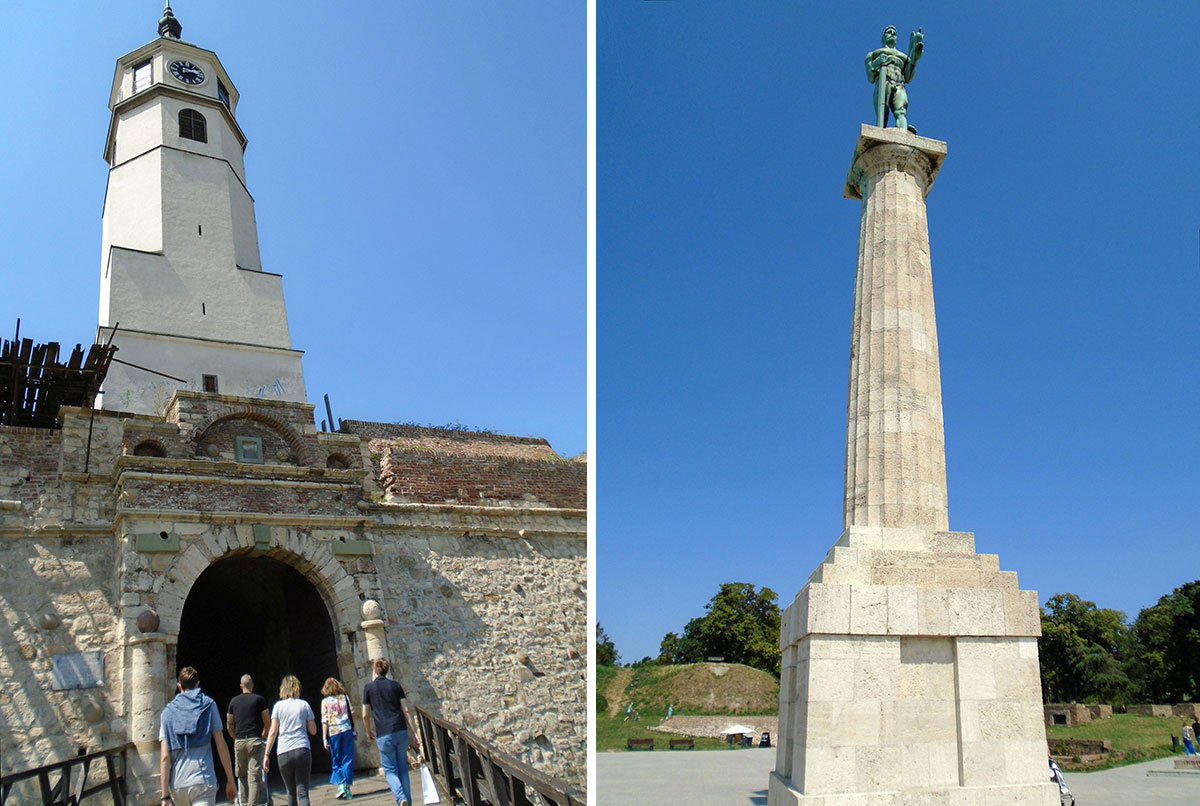
Left: Stambol Gate, the entrance to the Kalemegdan
Right: ‘Victor’ monument, a symbol of Belgrade (click or tap to expand)
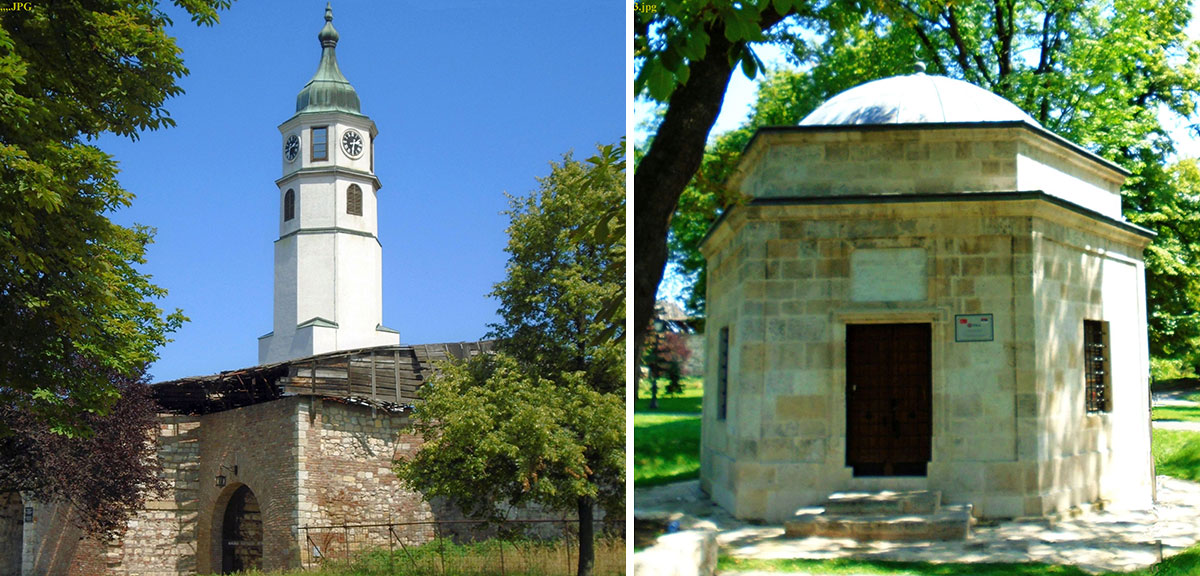
The Sahat (clock) Tower / Damad Ali Pasha's türbe, a hexagonal mausoleum made of stone, one of few original monuments of Islamic architecture
Situated in the very centre of the city, on a hilltop overlooking the spot where the river Sava flows into the Danube, today Kalemegdan is the most visited of Belgrade’s sites. It is composed of a fortress, a huge park, a zoo, an observatory, several museums and galleries, tennis and basketball courts and many monuments symbolizing various epochs.
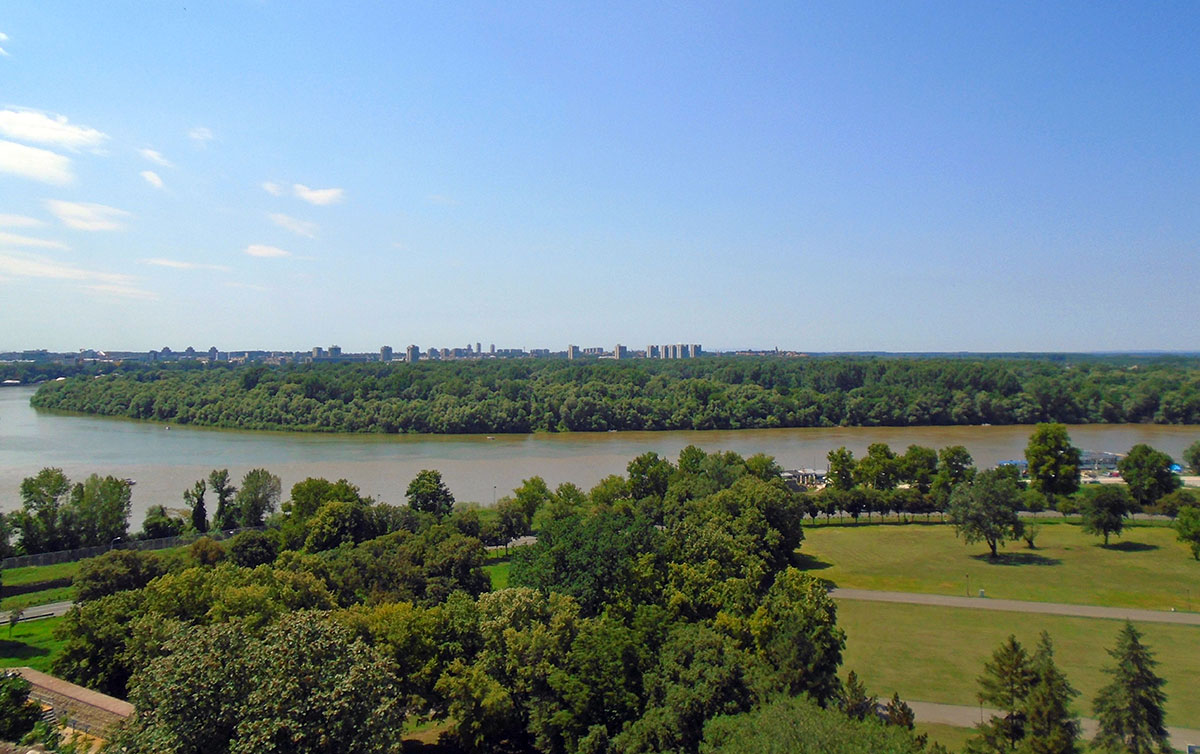
A view from Kalemegdan over the confluence of the rivers Danube and Sava
The second most visited place after Kalemegdan is Skadarlija, which they say attracts more than 20,000 visitors a day at times and contributes to one-third of Belgrade’s intake of foreign currency.
Found in the Old Town, Skadarlija is a long cobble-stone street lined with cafés and restaurants. It is considered the capital’s bohemian quarter and it is likened to Paris’ Montmartre neighbourhood. In May 1978, Skadarlija and Montmartre were twinned and two identical plaques were placed at each side to mark the event.
The Skadarlija inns or ‘kafanas’ became a meeting place for the city’s artists and intellectuals at the end of the 19th century.
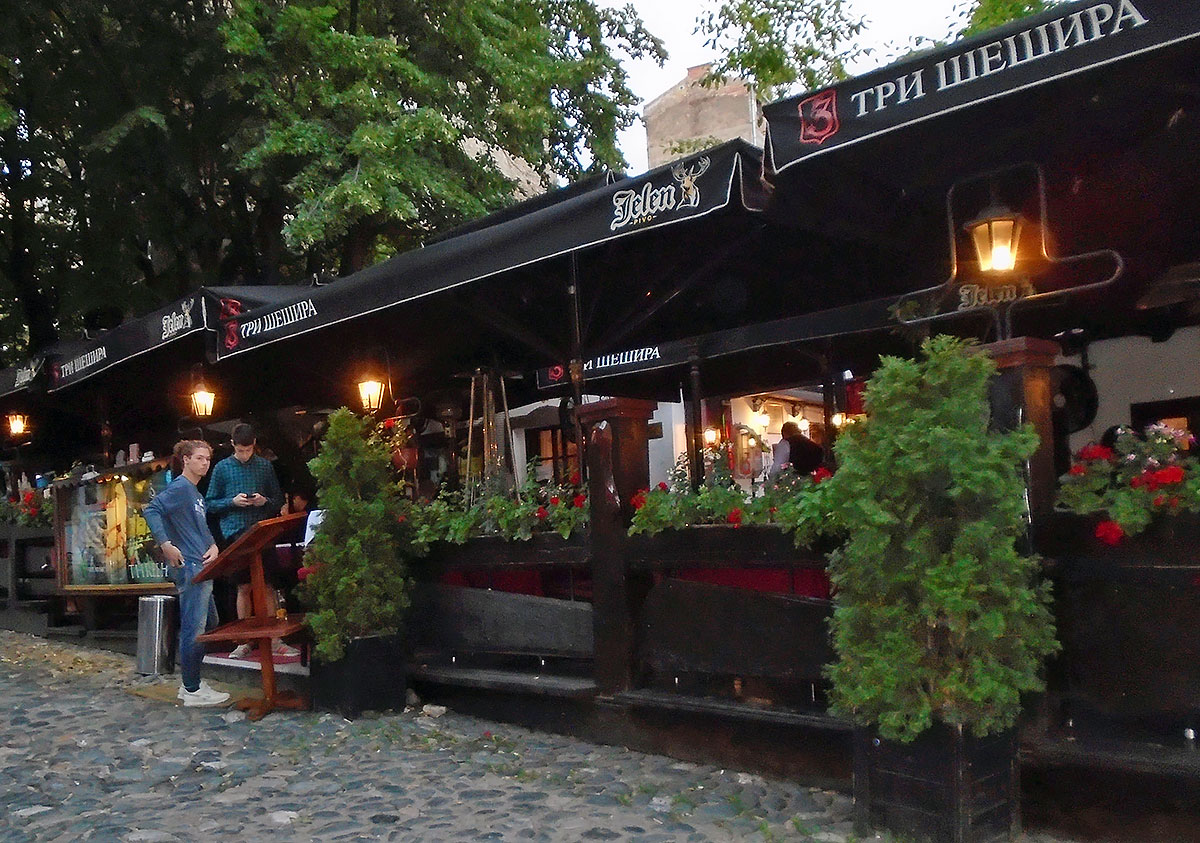
Tri šešira ("Three Hats"), one of the oldest surviving restaurants dating back to 1901, in the early evening
Live music greets you at the entrance or serenades you while you are having your meal — a typical feature of the Skadarlija atmosphere. The songs are usually in the style of ‘starogradska’ music, literally translated as ‘old city music’, but it actually refers to urban traditional folk songs from olden times. It differs from the pure traditional folk music in its melodious and text elaborations and instruments that were suited to the bourgeois style. Also, instead of the traditional village costumes that the rural folk performers wear, the ‘starogradska’ music performers are clad in European old city fashion, usually white shirts, hats, neckties and suits. It is cultivated in all ex-Yugoslav republics but Skadarlija is a special venue for it.
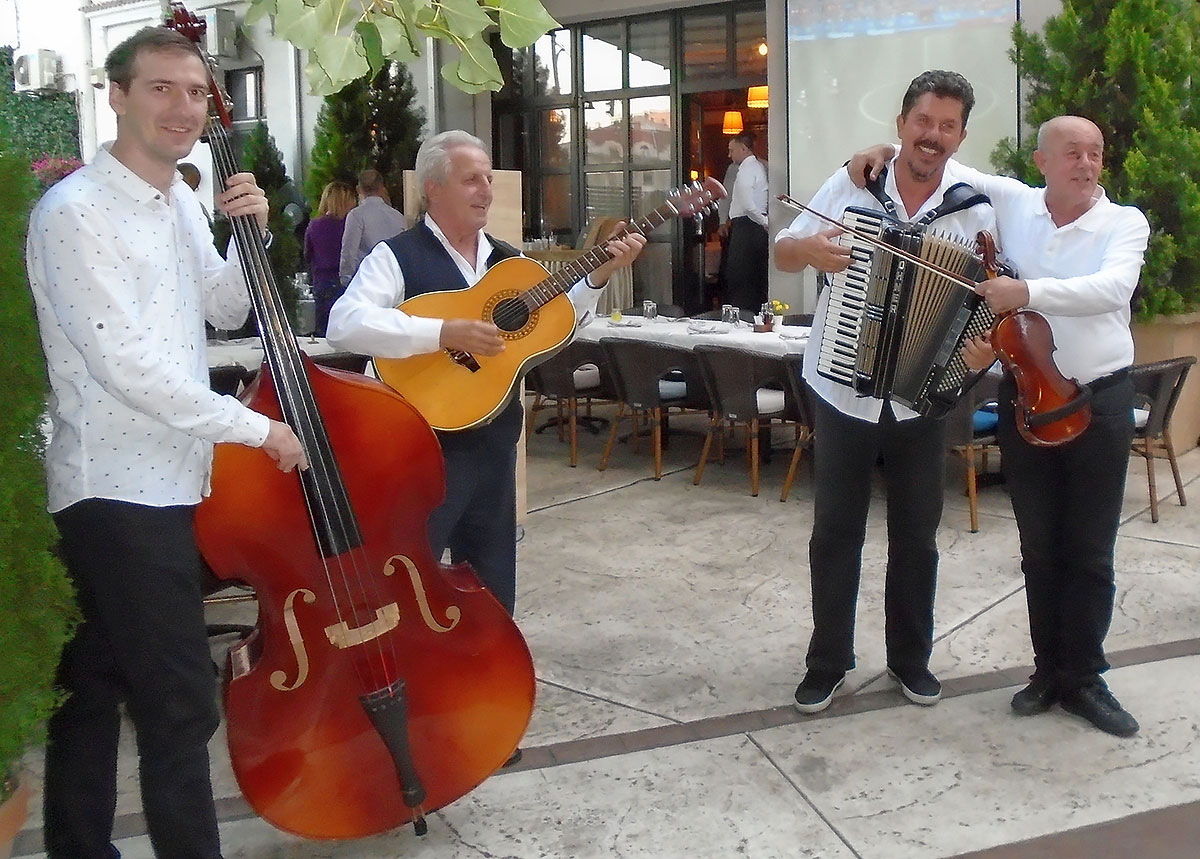
Jolly musicians in Skadarlija
The ‘hat’ has a prominent importance; waiters and musicians wear a fedora-type hat, it figures in the restaurants’ names and it features in song’s texts.

‘My Hat’ restaurant
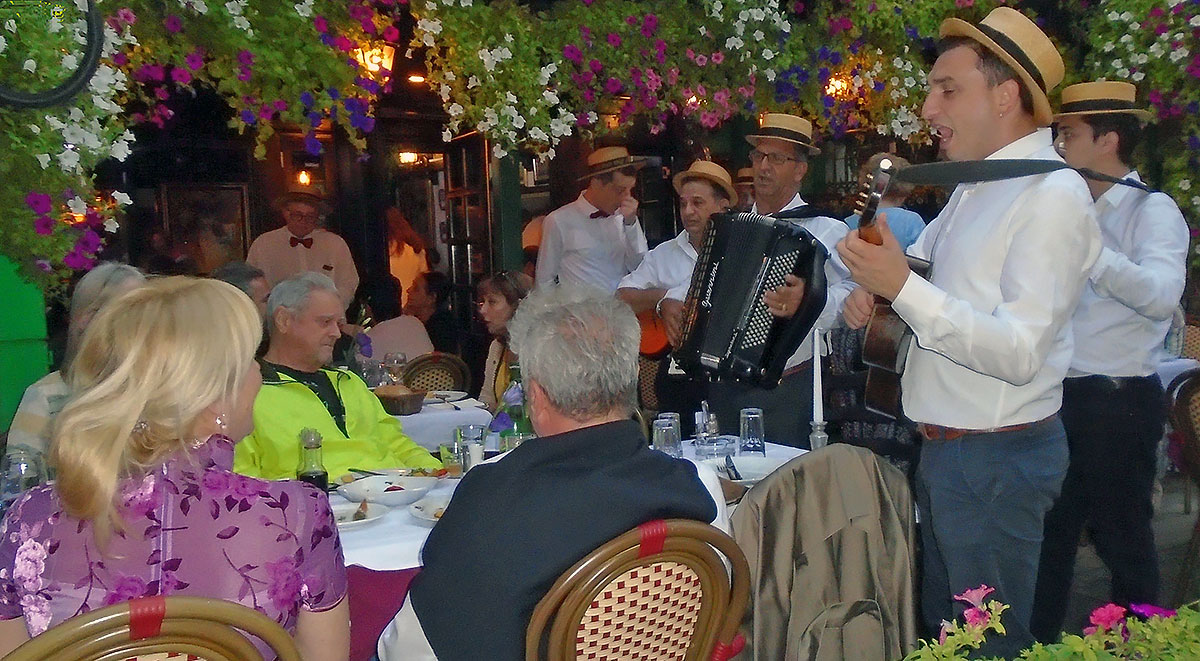
Musicians clad with fedora hats at the ‘My Hat’ restaurant
Historically, Skadarlija was a Gypsies settlement and for a while, the locality was called Gypsy Quarter or Gypsy Alley. The Gypsy element of freedom, music and dancing lingers until today.
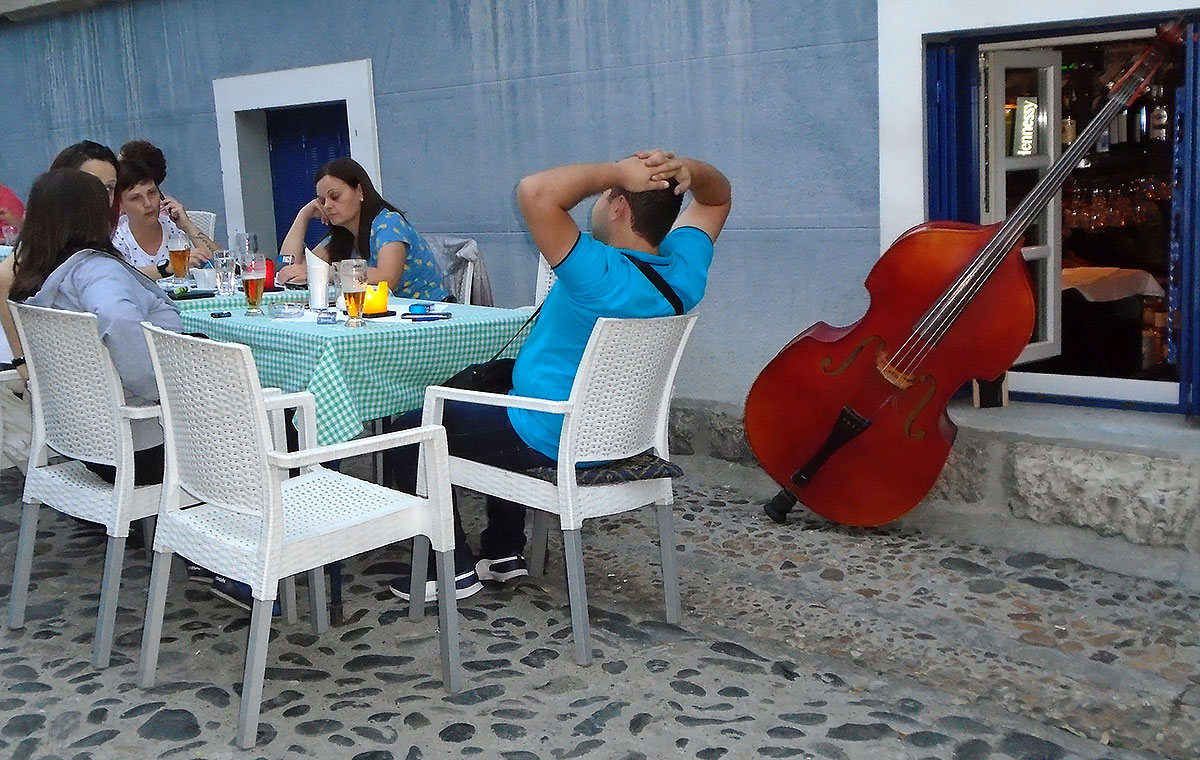
A ‘contrabass’, the symbolic instrument of both ‘starogradska’ and Gypsy music, casually leaned against a wall
 Since 1993, in late April or early May, the Skadalija’s summer season is officially opened by rising a ‘bohemian flag’ attended by artists, actors, singers and celebrities.
Since 1993, in late April or early May, the Skadalija’s summer season is officially opened by rising a ‘bohemian flag’ attended by artists, actors, singers and celebrities.
Around the corner from Skadarlija, wandering around the city centre, I was pleasantly surprised by a large poster displayed at the Serbian National Theatre’s walls: a dark magenta female shoe with a queen chess piece in the place of a heel and pawns scattered around. It was announcing the opera ‘Cinderella’ by Gioachino Rossini (this year is the 150th anniversary of Rossini’s death). A modern rendition of this cult opera aims to emphasize the symbolic meaning of life events alluding to the game of chess: ‘one can achieve far greater success than would have been reasonably expected’; ‘unfortunate circumstances can suddenly change to remarkable fortune’; ‘you may feel lost but like a Cinderella you may suddenly climb to the top’
The House of the National Assembly of the Republic of Serbia was the seat of the Parliament of Yugoslavia and the Parliament of Serbia and Montenegro between 1936 and 2006 and now the Parliament of Serbia.
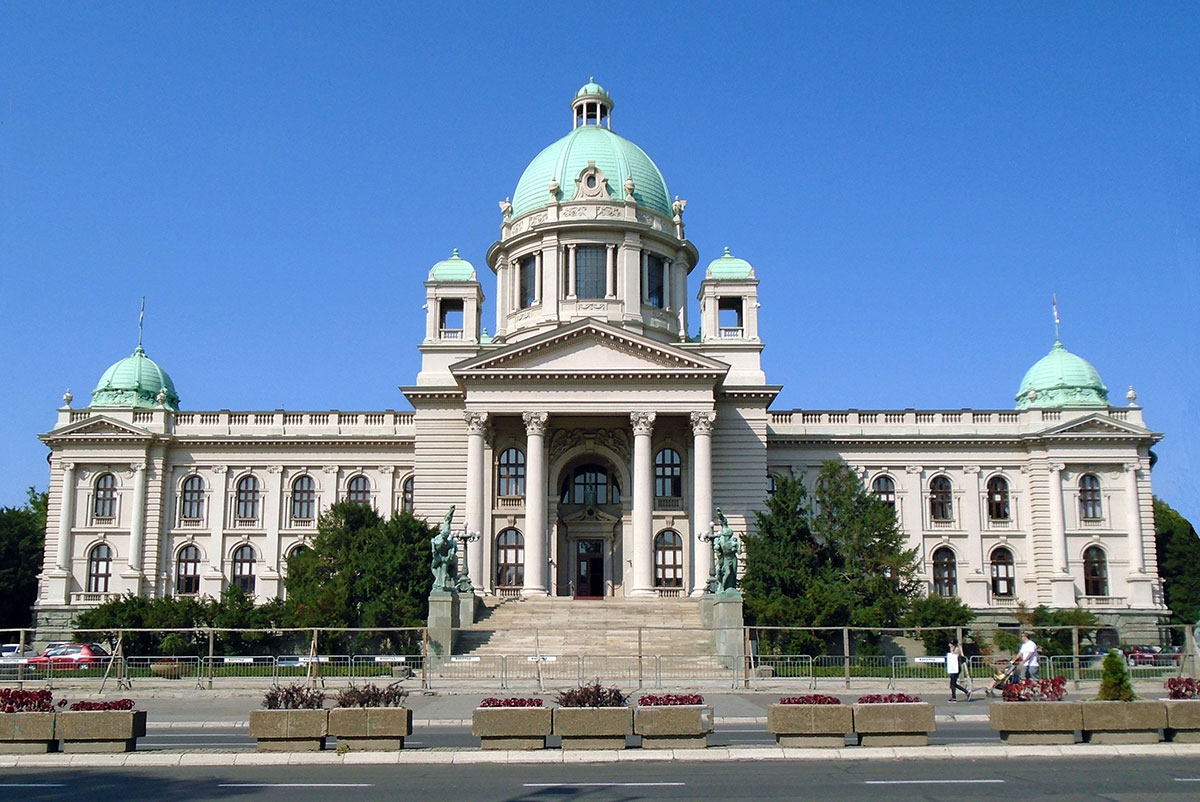
National Assembly of Serbia
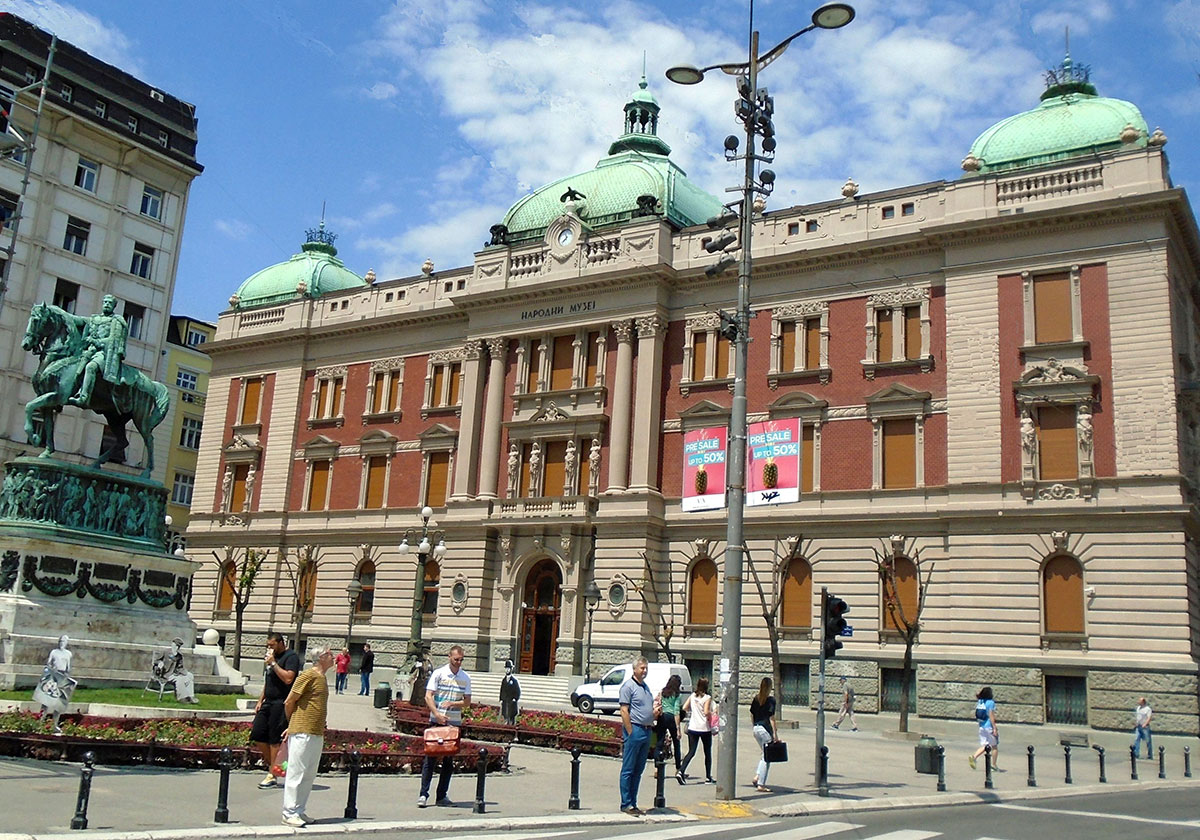
The National Museum of Serbia, the oldest and largest in former Yugoslavia, home to Serbian and foreign art masterpieces
One of the largest churches (specifically Orthodox churches) in the world, Saint Sava Temple is dedicated to Serbia’s first archbishop. Born into royalty by the name of Rastko Nemanjić in the late 12th century, as a teenager, he escaped to Mt. Athos in Greece to become a monk. He took the name Sava and devoted his monastic life to the creation and growth of the Serbian Orthodox church. His remains were burned by the occupying Ottoman Empire during an uprising in 1594 on the spot where the church stands today. In front of the temple stands a statue of Karadjorgje (Karađorđe), the founder of modern Serbia, who led the uprising of 1804–1813 against the Ottomans
On the dome there are texts written in both Church Slavonic language and Greek, connecting the pan-Slavic and Byzantine traditions.
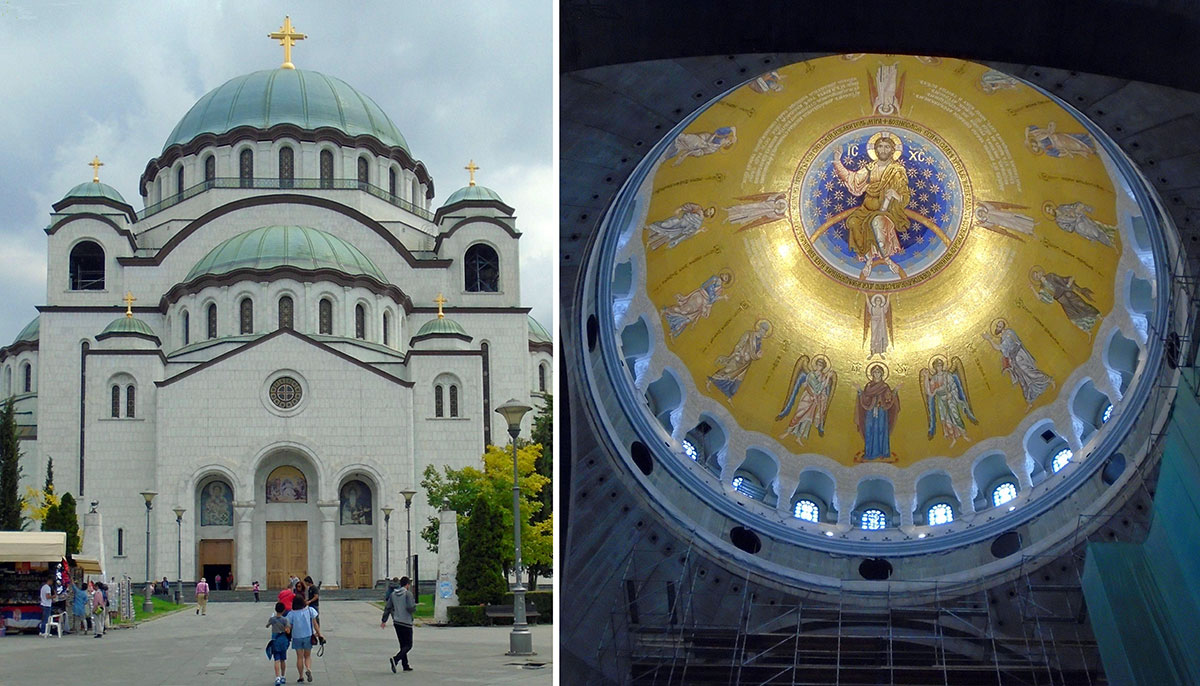
The Saint Sava temple and its dome gilded with mosaics inspired by the dome of St Mark’s Basilica in Venice
Vuk Stefanović Karadžić (in Cyrillic - Вук Стефановић Караџић ), (1787, Tršić, Ottoman Empire - 1864 Vienna, Austrian Empire) was a Serbian philologist and linguist, a reformer of the Serbian language and promoter of Serbian folklore and culture. He is particularly well known for his collections of folk songs, tales, and proverbs published in several volumes. Many of the collected epic songs he learned by heart as a child and wrote them down from memory.
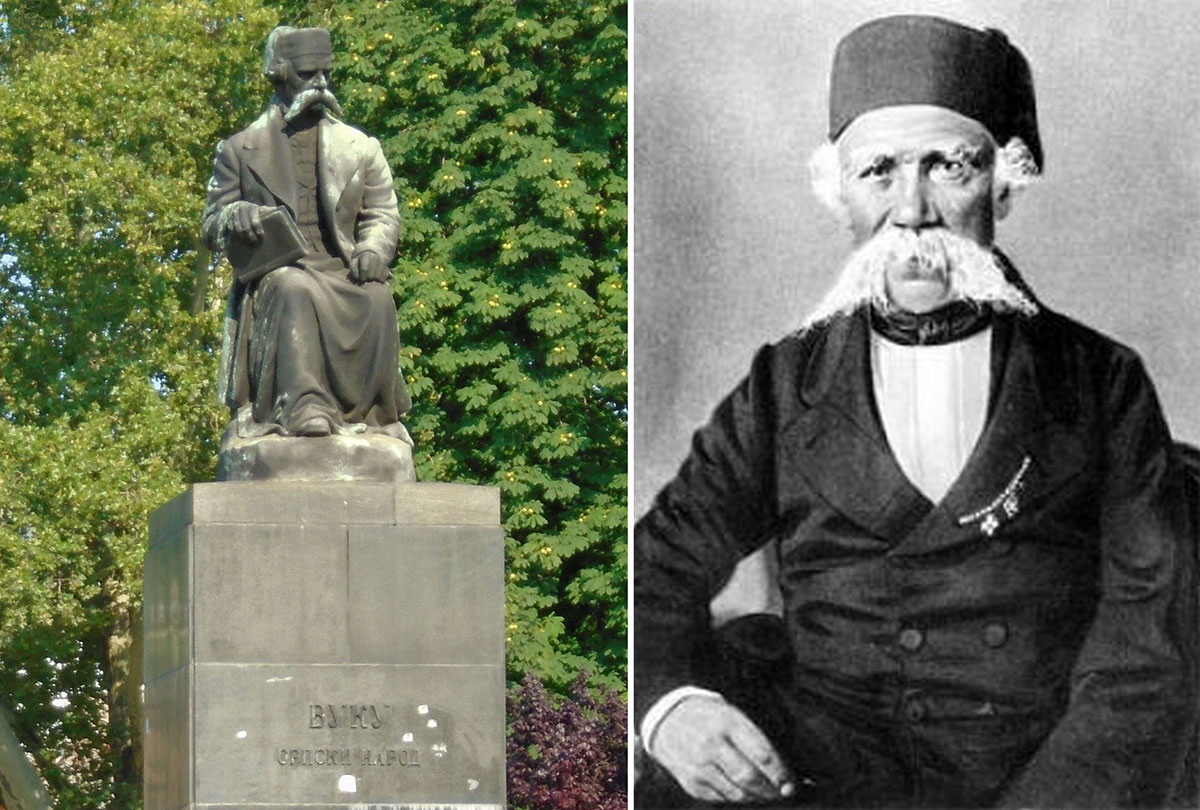
On the monument's plaque is written: ‘To Vuk, from the Serbian people’ — Karadžić was instrumental for instituting the Serbian Cyrillic alphabet that is in use until today, although Latin orthography is also found
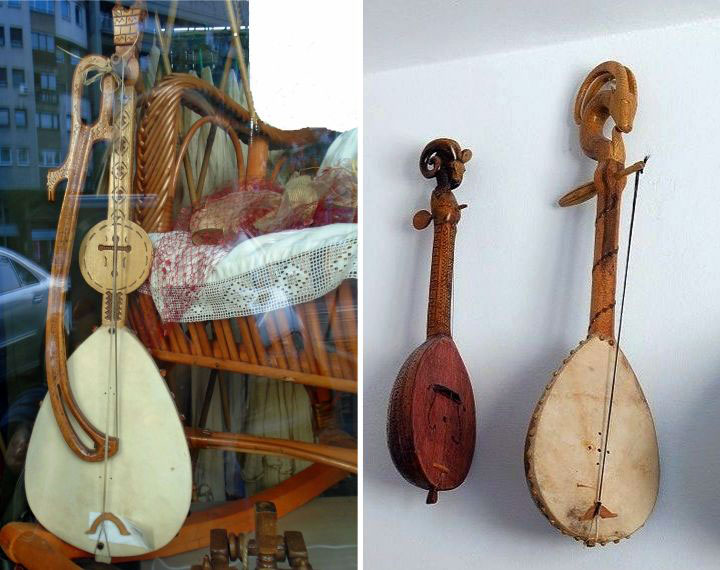
Gusle, a traditional Serbian folk instrument, is a one or two-stringed fiddle used to accompany singing epic poetry
A wooden jar usually made of maple or beech is a typical container for Serb national drink ‘sljivovica’, its better-known derivative, (plum brandy); traditional peasant leather footwear ‘opanci’; the striped shirt of the Serbian national pride, the football club ‘Red Star’, the most successful club in former Yugoslavia, winners of the European Cup and the Intercontinental Cup, both in 1991, a success cut short by the ensuing Balkans wars (1991–2001).

Typical container for Serb national drink ‘sljivovica’
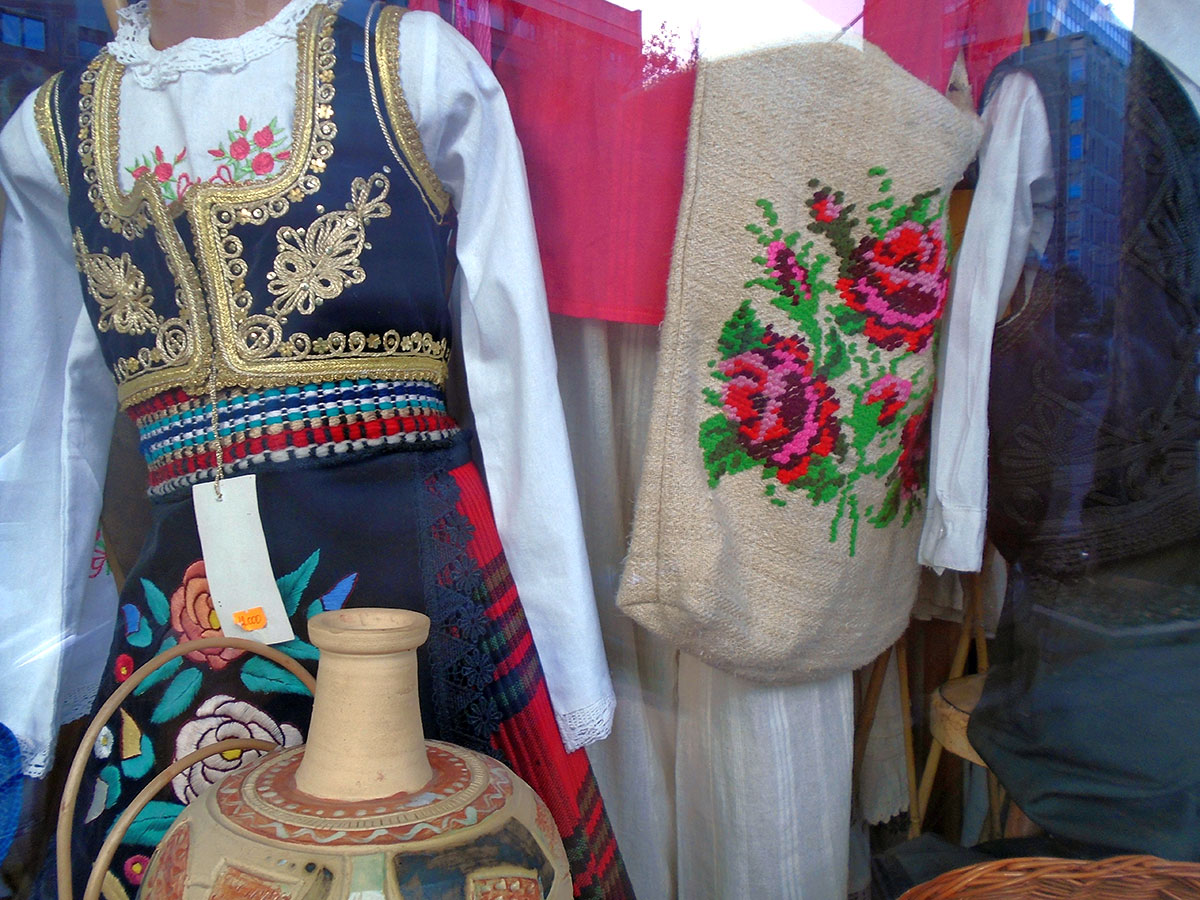
A folk dress embroidered with metallic, golden thread and an embroidered bag
Another favoured son of the Serbian people is Nikola Tesla (c. 1856–1943), engineer and inventor. Among his many inventions, the best known is the alternating-current (AC) electric system, which is still predominantly used today across the globe. He also created the "Tesla coil," used in radio technology.
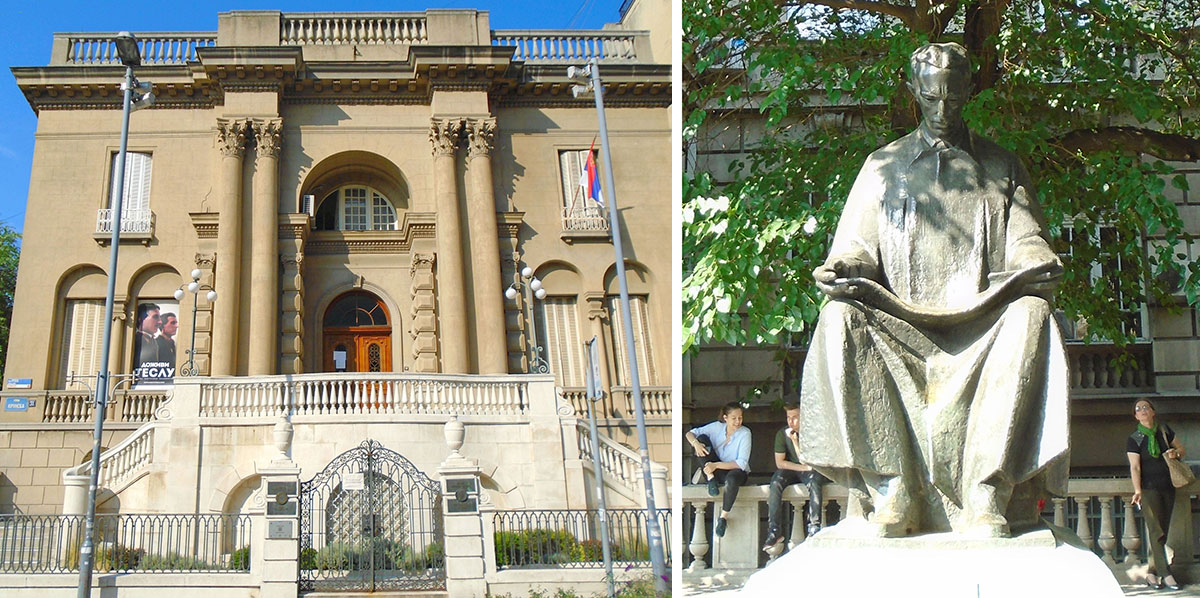
Nikola Tesla’s monument in front of the School of Electrical Engineering, University of Belgrade / Nikola Tesla Museum
The Nikola Tesla Museum has a large collection of original documents, books, journals, historical technical exhibits, instruments and apparatus, photo plates, plans and drawings. A visit to the museum gives you the opportunity to interact with the exhibits. One fascinating interaction is a neon lamp that, when we hold it in our hands, starts to glow without being connected to an electric socket because of the energy conducted from the device’s wires to our body through the air by means of ions — our body acts like a conduit!
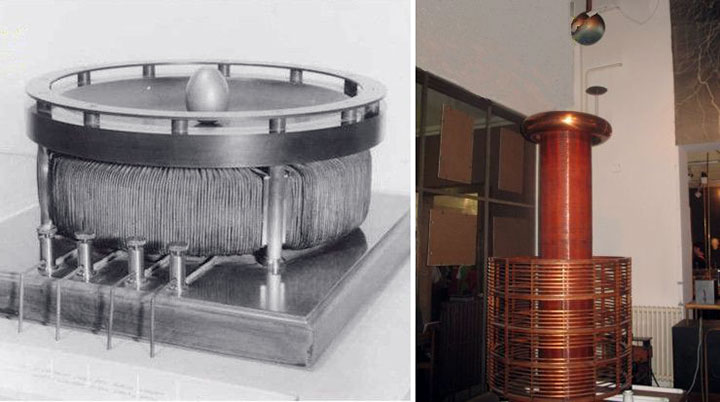
Exhibits at the museum: the Columbus Egg / the Tesla Coil
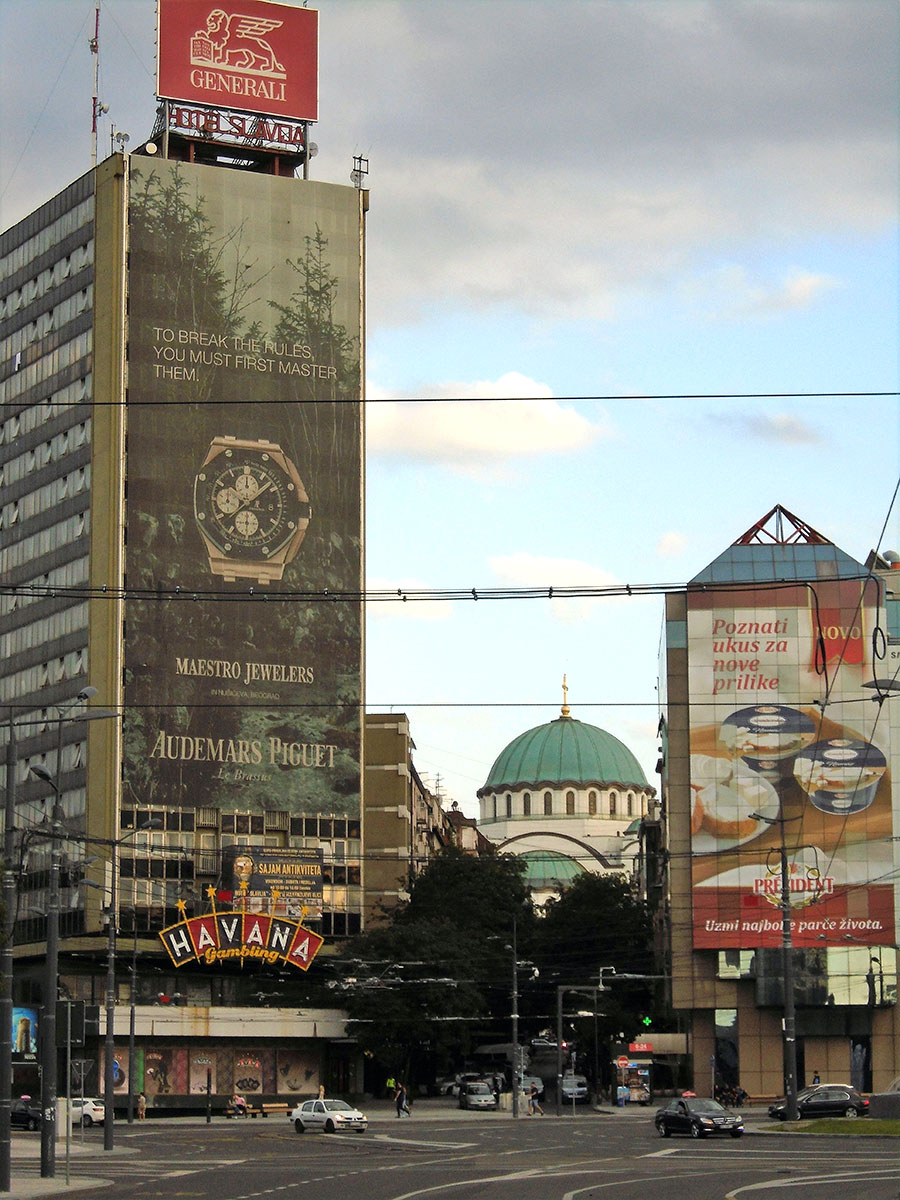
The Slavija Hotel (the cables belong to the trams and trolleys that make Belgrade’s public transport)
I am a bit partial towards this old, simple, communist style hotel where I had the privilege of being a guest. One of the oldest in Belgrade, the Slavija Hotel’s original site was erected in 1882. It has undergone numerous demolitions and reconstructions until it got its contemporary look in 1962, when it was fully rebuilt on the occasion of the European Championship in athletics. It has remained ever since a sort of ‘sports hotel’ offering hospitality to sporting delegations including chess. It is also dubbed a ‘chess hotel’ having hosted numerous Serbian Championships and other chess related events.
It is centrally located with a giant lighted musical fountain in front of its doors on the Slavija square, which is a huge central traffic roundabout.

Left: The Slavija Square Fountain
Right: Belgrade at night | Photos: slavijahotelbelgrade.com
In stark contrast, the Moskva Hotel, one of the most recognizable Belgrade landmarks, is an up-market, architecturally opulent, art nouveau style building with a remarkable history. Its current structure, which dates back to 1908 is a result of several architectural designs proposed by architects from the Kingdom of Yugoslavia as well as the famous Vienna architect Otto Wagner. But the final plans were approved in Russia by Saint Petersburg’s architects. Its shiny façade made of ceramic tiles is in the style of the Saint Petersburg cessation. It was an investment of the Russian Empire in the Kingdom of Serbia economy which originally operated as Rossiya Palace. Personally opened by King Peter I of Serbia, it marked a turning point in strengthening the Serbian-Russian economic and political ties and moving away from Austria-Hungary.
It is stained by an infamous historical event: in 1941 when the Kingdom of Yugoslavia was conquered by Nazi Germany, the Gestapo moved into the Hotel Moskva turning it into their headquarters.
In the post World War II period, the hotel served as a meeting place to the cultural elite. Yugoslav Nobel laureate for literature, Ivo Andric and poet Vasko Popa were regular visitors having their reserved tables and corners in the hotel. The Moskva hotel is a favourite of world-famous personalities when visiting Belgrade, including Karpov and Kasparov.

Moskva Hotel
A bakery or ‘pekara’ is found on every corner. Some have a modernized, contemporary look, but most of them are traditional, cosy places, well tended by their owners. They serve a fast food version of the Balkans, which consists of the ubiquitous ‘burek’ that usually goes with a pot of yoghurt, as a remaining legacy of the Ottoman times, and various Serbian savoury pies and cakes.
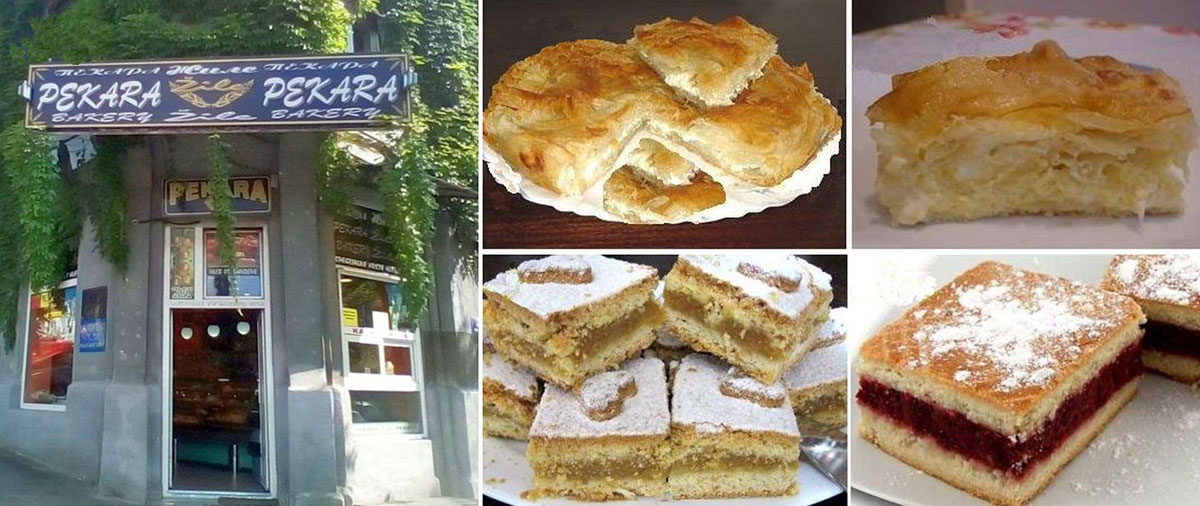
Clockwise from top left: Burek, ‘Gibanica’ (eggs and milk pie), lazy pie with sour cherries, lazy pie with apples
Among the elegant, baroque and art deco style buildings of the central Belgrade, one can see a small area of ruins which used to be the Yugoslav Ministry of Defense Headquarters. It is a sad, frightening memory of the NATO bombing in 1999 that the Belgrade citizens voted to remain intact as a reminder of the conflict.
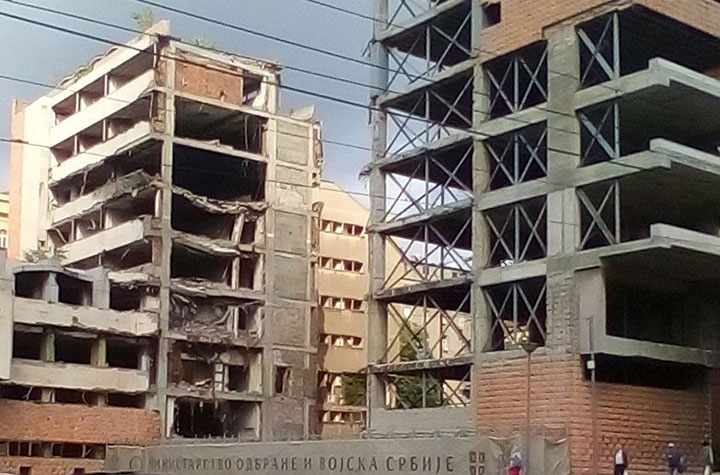
The bombed building
The chess world also remembers these years for another reason: Bobby Fischer was caught up in the political row and punished by the US government for his match with Spassky in Sveti Stefan, Montenegro (1992), an area that was subjected to political and economic sanctions by the USA. No doubt it deteriorated his already fragile state of mind and general health.
Serbia made an important contribution to chess publishing with the ‘Informator’ (‘Chess Informant’) that pioneered the publishing of analysed games; it was formed in Belgrade and, in spite of the digital revolution, is still printed today and maintains a steady following of readers and contributors.

A front page and Fischer consulting the ‘Informator’ shortly after becoming a world champion
On the Republic Square, which is the main, central city square, is found a statue of Mihailo Obrenovic, Prince of Serbia, 1839 – 1842 and 1860-1868, riding a horse. ‘The Horse’ has a prominent role as a meeting place of various kinds. Making a date in Belgrade usually contains the words ‘Let’s meet at the Horse’.
On the last day of my stay in Belgrade, ‘the Horse’ served as a meeting place with my lovely friends…
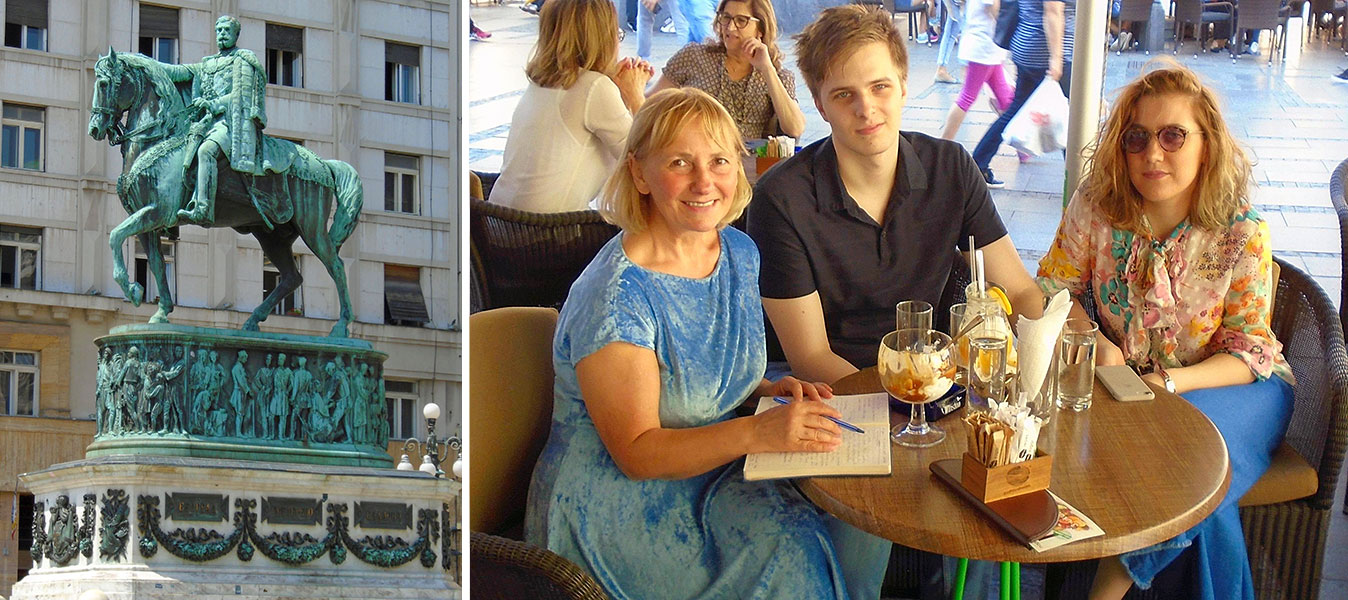
Ending a beautiful sojourn in the Serbian capital, out and about with my wonderful companions, the chess golden couple, Jovana and Richard Rapport (click or tap to enlarge)
Photomontage by Diana Mihajlova